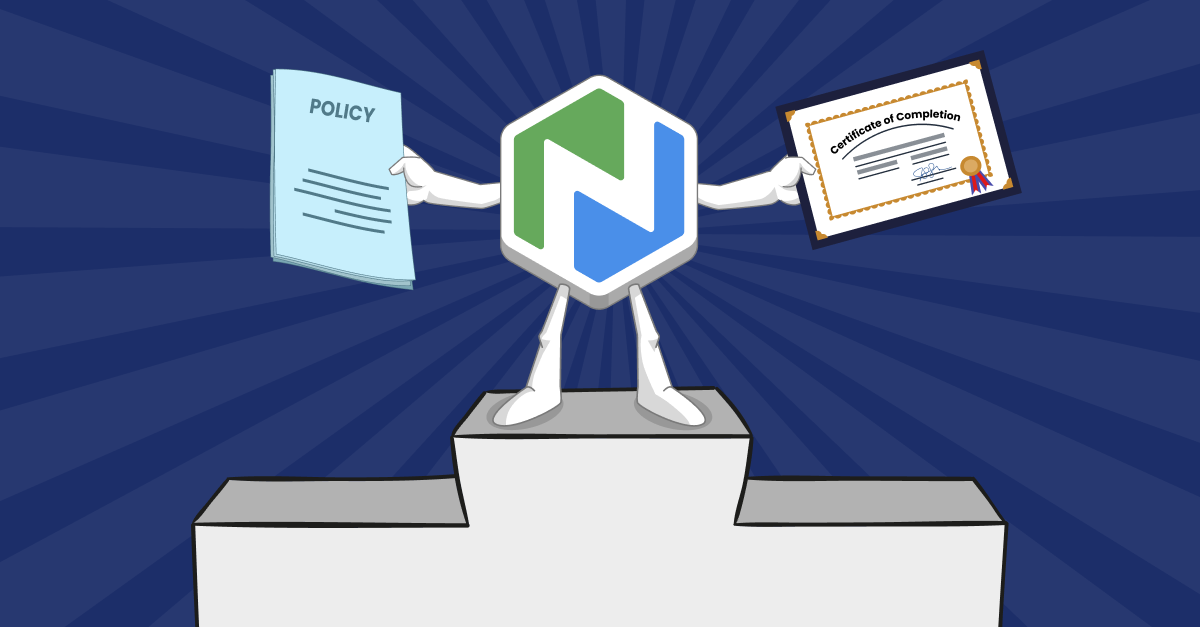How to Prove Compliance to Elected Officials
Follow four training best practices to make it easy to prove that you are aligned with federal, state, and local requirements.

“Compliance” usually calls to mind federal or state laws requiring training on high-liability topics like sexual harassment or safety. If you have an embarrassing incident and you can’t prove to elected officials that you’ve provided the requisite training, you’re in for a world of hurt. But, local policies and procedures can also become a hot-button issue for an elected official. Imagine a situation where a candidate for office accuses an incumbent official of incompetence because your organization has not followed a financial due-diligence process. It would suddenly be essential for you to prove your compliance with that local policy.
Compliance usually comes in one of two flavors. The first is what you might call checkbox compliance—you meet your obligation if you can prove you provided the training. For many state and federal laws, checkbox compliance is good enough. In other situations, a second flavor is needed, which we’ll call mastery-based compliance. For mastery-based compliance you need to prove that people can actually apply specific skills and knowledge. A need for mastery-based compliance is indicated by the answer to this question: “What’s the worst thing that can happen if someone doesn’t actually understand and use the skills from this training?”
Whichever flavor of compliance you’re dealing with, you face real obstacles to proving compliance. How do you get everyone to take the needed training? How do you keep accurate records over time as employees come and go? How do you verify mastery when it’s required? To make your life easier and your work more enjoyable, we offer the following:
4 Best Practices That Make it Easy to Prove Compliance
Track All Training Online
Whether training is conducted in-person or online, you need to make sure that it’s tracked online in a learning management system. For in-person training, you can:
- Point participants to an online quiz to verify their understanding of the material.
- Have participants upload a picture or a certificate that shows they attended.
- Have people respond to an online question about the training so you have a record of their participation.
- Have people certify in an online form that they participated in the training.
It’s important to track all training in a learning management system so you automatically have reports showing completion and learning outcomes for each learner. Paper attendance lists and spreadsheets create unnecessary work when it comes time to prove compliance. Keep in mind that some LMS systems are much lighter and easier to use, for you and your learners, than others.
Use Tools that Reduce the Cost of Creating Training
It may not always be practical to hire a learning designer to create all the compliance training you need. Luckily there are good tools that help reduce the cost and complexity of creating local training. Here are some examples:
- Physical processes - Use a cheap tripod and a phone to record someone doing the job and showing how it’s done. The tripod keeps the phone steady so you get a good recording. The phone captures both video and sound that you can upload to your LMS.
- Computer-based processes - Use screen capture to record someone doing what needs to be done. The screen capture video can be uploaded to your LMS so you can track training.
- Rules and policies - Make rules and policies available through your LMS or add a way for people to verify they’ve read them. A good LMS will let you cut and paste from an existing document or simply upload an electronic copy of the document.
- Assessment - Use AI to help you create quizzes for your existing training. The AI prompt might look something like: “Create 3 quiz questions to verify that someone understands the following policies: [paste in your policy text].” You will still need to verify and edit what the AI produces, but using AI can be a huge time saver.
Adapt Training to the Needs of Specific Audiences
Getting people to actually take training is one of the biggest obstacles to proving compliance. You’re much more likely to get people to take training if you adapt it to their needs. Here are a some ways:
- Part-time staff are more likely to have a shorter tenure with the organization, a more specific and focused role, and a lower sense of investment in the job. Adapting to their needs means shorter, more task-specific training, and a light enrollment process.
- Staff with limited technical skills are more likely to resist or avoid online training elements. Adapting to their needs means more in-person options, direct support for online elements, and simplification of those online elements. Simplification might include access with a single link and a streamlined enrollment process.
- Seasonal staff, by definition, are short-tenured and likely to be hired at the same time as lots of other people. Online training elements will best meet their needs if they can be completed on a mobile device and completed in a very short period of time.
- Volunteers aren’t employees, but their work is essential to many organizations, particularly those with programs for seniors and children. Volunteers will likely have a high level of commitment to the program outcomes, but are less likely to engage deeply with the organization itself. Adapting to their needs means making the training easy to find and complete—and keeping it tightly connected to the outcomes of the volunteer program. Embedding their training in your organizational website or delivering it with a direct link in an email are two great solutions. Embedding it in your website has the added benefit of helping more people discover other things about your organization.
Make the Learner Experience Easy
This last suggestion is an extension of adapting to the needs of your learners. It consists of two key ideas that apply to any type of learner.
- Break your training into small chunks. Don’t ask someone to read a 50 page PDF file or sit through a 45 minute video. Even if your learners are willing to endure long material, they won’t remember much. Keep videos under 5 - 10 minutes in length. Break topics into short lessons mixed with interactive elements like quizzes and response prompts.
- Make enrollment easy. Don’t request lots of information or require learners to navigate through lots of clicks to enroll. Ideally, learners should be able to enroll with nothing more than a name, email, and a password.
Prove Your Compliance, Prove Your Value
You may have noticed in the ideas presented above, that making your own life easier centers on making things easier for the people you serve and work with. There is a sweet karma that comes into play when you help people do their jobs better. Not only are you able to prove compliance with regulations and procedures, you get better outcomes for the organization and the bigger mission it serves.
Want to know more? Schedule a free consultation to see how Niche Academy can help you implement these best practices.
.png)
.png)

.png)
.png)
.png)

.png)
.png)

.png)
